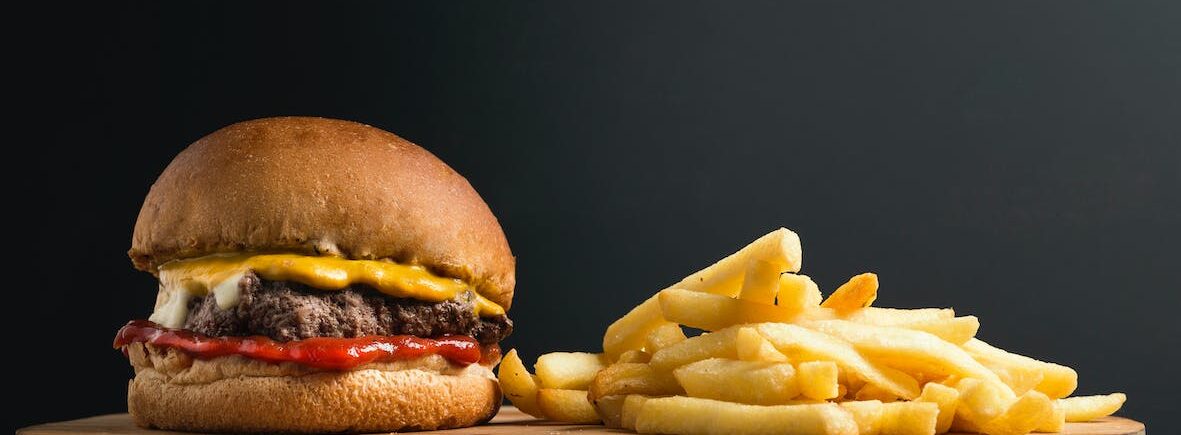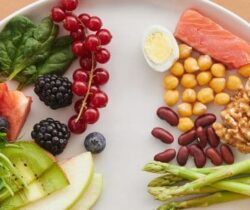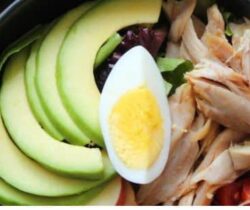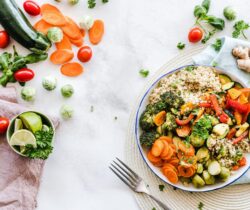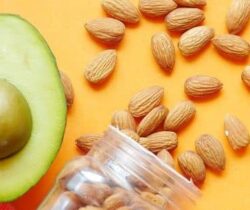What are Pre-diabetes diet foods to avoid?
This is a very common question that is asked, but the answer is a bit more complicated than expected. Everyone regardless of whether they have diabetes or not (or pre-diabetes) is recommended to eat a healthy and balanced meal. There aren’t certain foods that must be eaten or avoided. However, each individual may find that different ways of eating fit best with their personal lifestyle, culture and health goals. Ideally, if you have any questions, or need a bit of extra support, have a chat with your doctor about booking an appointment with an Accredited Practising Dietitian. There are some additional helpful resources at the bottom too.
These are foods that everyone regardless of being diagnosed with pre-diabetes should aim to have in small amounts and only sometimes.
If you’ve recently been told that you have pre-diabetes, this is a condition in which your blood glucose levels are both:
- Higher than normal (higher than 7.8 mmol/L), or;
- Not high enough to be diagnosed as type 2 diabetes (less than 11.1 mmol/L).
(Source: Diabetes Australia)
Your risk of developing type 2 diabetes becomes 10 to 20 times higher when you are diagnosed with pre-diabetes (Source: HealthDirect).
Your diet plays an important role in keeping you staying healthy and well by;
- Helping you maintain your general health
- Keeping your blood glucose and lipid (fat) levels in range
- Maintaining your blood pressure and body weight at healthy levels
- Preventing pre-diabetes developing into type 2 diabetes
What foods to eat less of with pre-diabetes?
If you’ve been diagnosed with pre-diabetes, there are certain foods that you should avoid or eat less often because they aren’t as nutritious, and they can also make your pre-diabetes worse if eaten regularly. Don’t worry though! These are the same types of foods that anyone whether or not they have pre-diabetes also needs to eat less often, so if you live with others, make this part of your family’s regular eating patterns to all eat healthy and balanced meals.
Foods with High Glycemic Index (GI) Carbohydrates
Your body uses carbohydrate foods for energy. Carbohydrate foods are broken down into sugars (glucose), and then move all around the body to be used up as an energy source. Different carbohydrates, and the amounts can be broken down at different rates, and this can impact blood glucose levels.
Carbohydrates with a lower glycemic index are slower to digest than carbohydrates with a high glycemic index. This is means that low GI foods often keep you feeling fuller for longer, and release glucose into the blood a bit slower than high GI foods. This can makes them more filling and provides a slower blood glucose response.
What are some examples of low GI foods?
Low GI foods include:
- Rolled oats
- Dense wholegrain bread
- Lentils and legumes
- Sweet potato
- Milk
- Yoghurt
- Wholemeal pasta
- Most types of fresh fruit
- Doongara rice
(Source: Diabetes Australia)
Foods that are high in sugar content
While a healthy eating plan can include some sugar, foods that are high in sugar content; such as sweets, lollies and soft drinks, should be consumed sparingly.
Processed foods in general tend to have added sugar for sweetening, adding bulk and preservation. The problem with this added sugar is that it causes blood glucose to rise, so it should be avoided if you are diagnosed with pre-diabetes (Source: ACT Government Health, pg 20).
Foods with saturated and trans fats
Eating saturated and trans fats in large quantities can raise the low density lipoprotein (LDL) ‘bad’ cholesterol levels in your blood. This may lead to the clogging of blood vessels, which can cause heart disease and worsen the effects of pre-diabetes (Source: Government of SA Health).
Saturated and trans fats can be found in;
- Animal products (e.g. fatty meats, dairy, animal skins, etc.)
- Vegetable fats (e.g. palm oil, coconut copha/milk/cream, etc.)
To reduce saturated and trans fats consumption try to limit the following ,
- Full fat milk, yoghurt, cheese, ice-cream and custard
- Animal fat, i.e. cutting fat off pork and beef, removing skin from chicken, etc.
- Poultry skin
- Butter, lard, dripping, cream, sour cream, copha, coconut milk, coconut cream and hard-cooking margarines
- Pastries, cakes, puddings, chocolate and cream biscuits
- Pre-packaged biscuits, savoury packet snacks, cakes, frozen and convenience meals
- Processed deli meats (devon/polony/fritz/luncheon meat, chicken loaf, salami etc) and sausages
- Fried takeaway foods such as chips, fried chicken and battered fish
- Pies, sausage rolls and pastries
- Creamy sauces or dressings
- Creamy style soups
What foods will help me manage pre-diabetes?
The Australian Guide to Healthy Eating states the importance of eating the following:
- Grain foods – mostly whole grain bread and high fibre cereals;
- Vegetables and legumes/beans;
- Lean meats, poultry, fish, eggs, tofu, nuts and seeds;
- Fruit;
- Reduced fat dairy products (milk, yoghurt, cheese and/or alternatives); and
- A reduced amount of “extras”, including;
- Fried foods;
- Baked goods such as cakes and muffins;
- Sugar-heavy foods such as lollies or chocolate;
- Savoury pastries;
- Pizza;
- Potato chips, etc.
Extra foods contain excessive amounts of energy from sugar, fat or salt. Try not to make them part of your everyday eating patterns and consume them in small amounts.
Portion sizes vary depending on your age and gender. More information on portion sizes can be found in the following links:
Eating foods with good fats
The previous section states the importance of avoiding saturated and trans fats, but good fats such as monounsaturated and polyunsaturated fats are helpful for cholesterol levels. This is because they lower bad cholesterol and increase good cholesterol, reducing the buildup of cholesterol in your blood.
Foods that contain healthy monounsaturated fats include:
- Avocados
- Unsalted nuts such as almonds, cashews and peanuts
- Olives
- Cooking oils made from plants or seeds, including: olive, canola, peanut, sunflower, soybean, sesame and safflower
Foods that contain healthy polyunsaturated fats (omega-3 and omega-6) include:
- Fish
- Tahini (sesame seed spread)
- Linseed (flaxseed) and chia seeds
- Soybean, sunflower, safflower, canola oil and margarine spreads made from these oils
- Pine nuts, walnuts and brazil nuts
How does a healthy and balanced diet help me manage pre-diabetes?
A healthy diet is one of many lifestyle choices that a person needs to adopt in order to successfully manage pre-diabetes. For example, eating a healthy diet makes it easier for you to manage your weight while also giving you the energy to exercise regularly.
How can the Life! Program help me avoid or manage pre-diabetes?
To avoid pre-diabetes, you have to know your risk for it. That is why the Life! program provides many tools such as their health check, an easy to use tool that determines your risk of type 2 diabetes.
Once you have your results, the Life! program gives you what you need to adopt a healthier lifestyle and avoid pre-diabetes.
Life! is a free healthy lifestyle program that helps you improve your eating habits, increase your physical activity and manage stress. You can choose from a group course or the Telephone Health Coaching service.
Our experienced health professionals will help you make small changes to your lifestyle so that you can achieve your health goals and reduce your risk of type 2 diabetes and cardiovascular disease. Life! is funded by the Victorian government and managed by Diabetes Victoria. You can check your eligibility for the program here.
Sources
https://www.diabetesaustralia.com.au/about-diabetes/pre-diabetes/
https://www.healthdirect.gov.au/pre-diabetes
https://www.eatforhealth.gov.au/guidelines/australian-guide-healthy-eating
https://health.act.gov.au/sites/default/files/2018-09/IGT%20Pre-diabetes%20booklet.pdf
Reviewers:
Elleni Kaias, Accredited Practicing Dietitian | Primary Care Engagement Lead
Kristie Cocotis, Head of Prevention and Health Promotion
Sarah Dubé, Strategy and Engagement Lead
Ria Cheripuram, Digital Communications Officer
Tegan Kohlman, Communications and Social Marketing Officer
